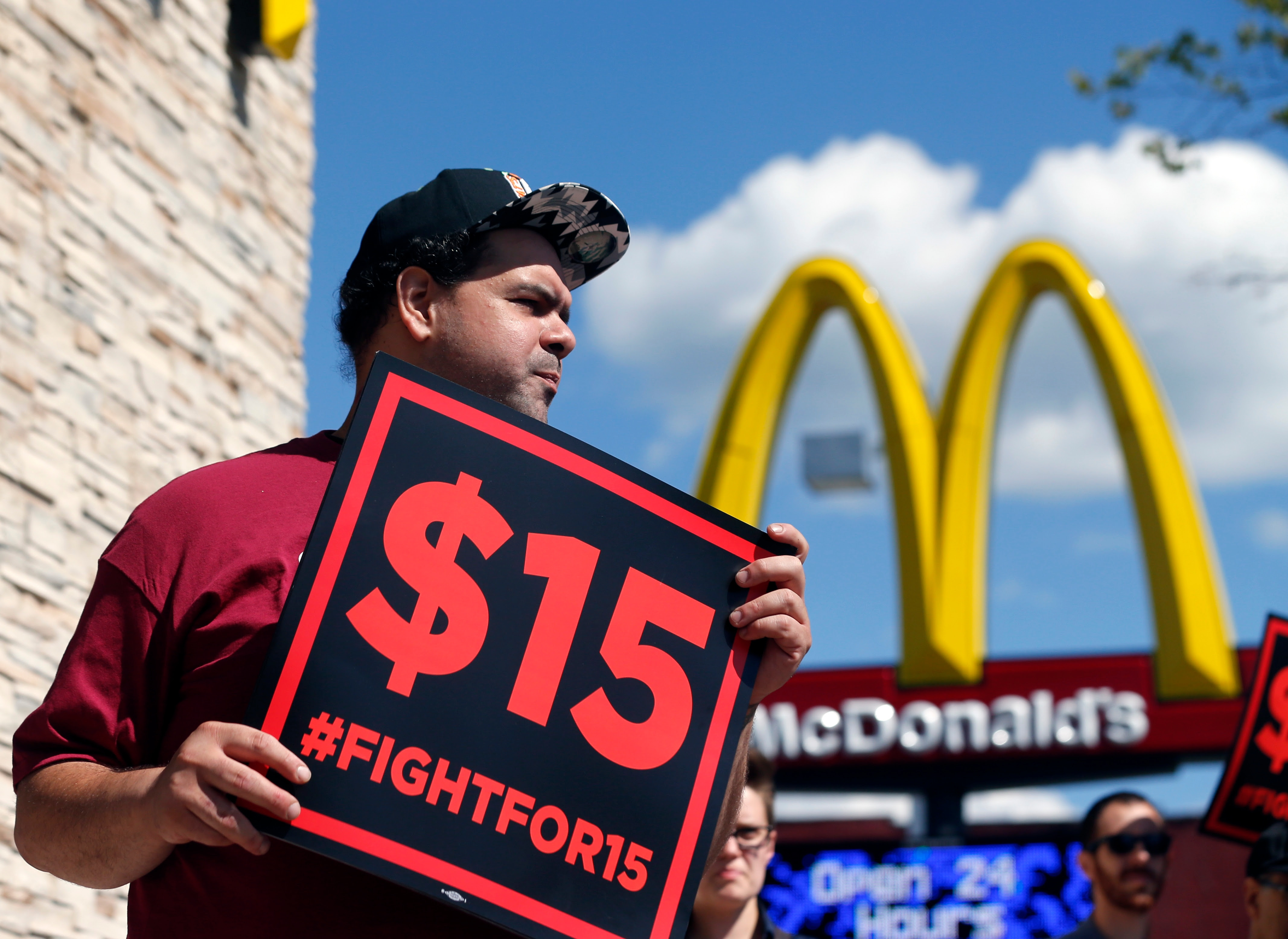“Will” is the operative word here , not “could”.

Many chains are already at work looking for ways to take humans out of the picture.
Crowded. That’s how Ed Rensi remembers what life was like working at McDonald’s in 1966. There were about double the number of people working in the store — 70 or 80, as opposed to the 30 or 40 there today — because preparing the food just took a lot more doing.
“When I first started at McDonald’s making 85 cents an hour, everything we made was by hand,” Rensi said — from cutting the shortcakes to stirring syrups into the milk for shakes. Over the years, though, ingredients started to arrive packaged and pre-mixed, ready to be heated up, bagged and handed out the window.
“More and more of the labor was pushed back up the chain,” said Rensi, who went on to become chief executive of the company in the 1990s. The company kept employing more grill cooks and cashiers as it expanded, but each one of them accounted for more of each store’s revenue as more sophisticated cooking techniques allowed each to become more productive.
The industry could be ready for another jolt as a ballot initiative to raise the minimum wage to $15 an hour nears in the District and as other campaigns to boost wages gain traction around the country. About 30 percent of the restaurant industry’s costs come from salaries, so burger-flipping robots — or at least super-fast ovens that expedite the process — become that much more cost-competitive if the current federal minimum wage of $7.25 an hour is doubled.
“The problem with the minimum-wage offensive is that it throws the accounting of the restaurant industry totally upside down,” said Harold Miller, vice president of franchise development for Persona Pizzeria, who also consults for other chains. “My position is: Pay your people properly, keep them longer, treat them right, and robots are going to be helpful in doing that, because it will help the restaurateur survive.”
Many chains are already at work looking for ingenious ways to take humans out of the picture, threatening workers in an industry that employs 2.4 million wait staffers, nearly 3 million cooks and food preparers and many of the nation’s 3.3 million cashiers.

No comments:
Post a Comment